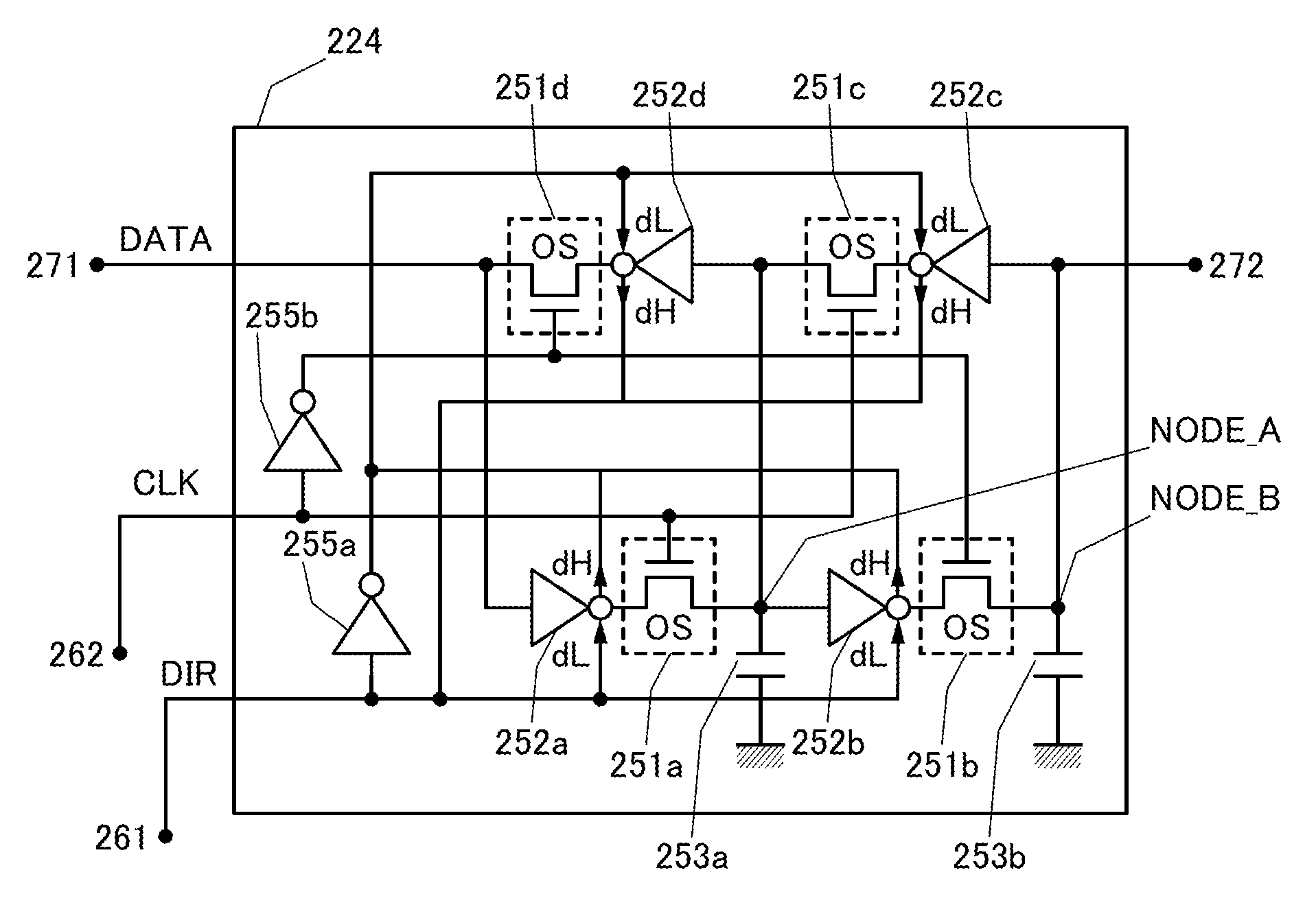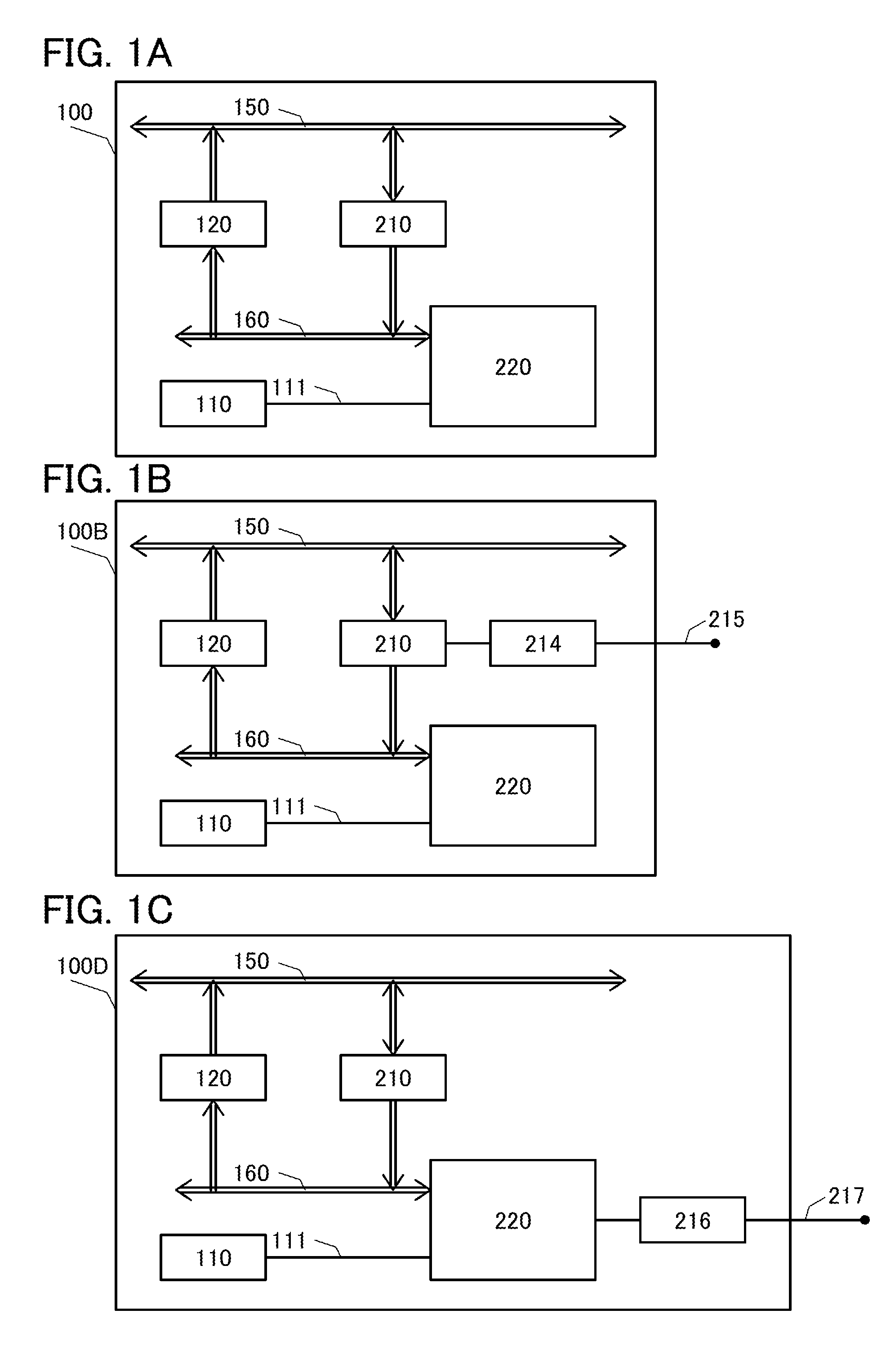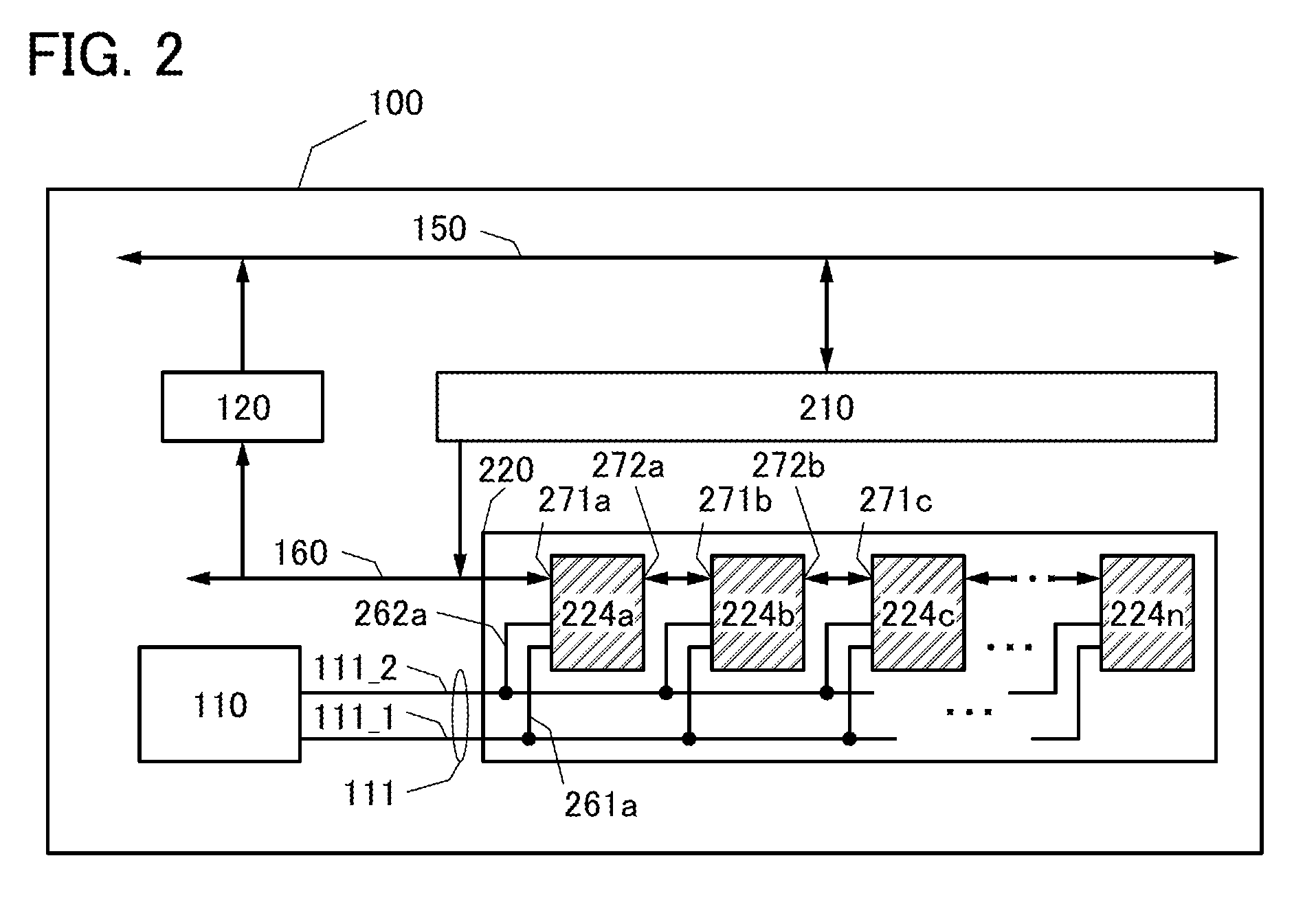High speed processing unit with non-volatile register
a processing unit and register technology, applied in the field of high-speed processing units with non-volatile registers, can solve the problems of difficult to increase the memory capacity of the register, and achieve the effects of high reliability, low power consumption, and significant capacity of the non-volatile register
- Summary
- Abstract
- Description
- Claims
- Application Information
AI Technical Summary
Benefits of technology
Problems solved by technology
Method used
Image
Examples
embodiment 1
[0057]In this embodiment, the structure of a semiconductor device of one embodiment of the present invention will be described with reference to FIGS. 1A to 1C. FIG. 1A is a block diagram illustrating the structure of a semiconductor device of one embodiment of the present invention, FIG. 1B is a block diagram illustrating the structure of a semiconductor device of another embodiment of the present invention, and FIG. 1C is a block diagram illustrating the structure of a semiconductor device of yet another embodiment of the present invention.
[0058]The semiconductor device illustrated in FIG. 1A includes a register 210 electrically connected to a first transmission path 150 and a second transmission path 160, a reading / writing circuit 120 electrically connected to the first transmission path 150 and the second transmission path 160, a nonvolatile FILO register 220 electrically connected to the second transmission path 160, a control circuit 110 controlling the nonvolatile FILO regist...
modification example 1
[0073]A modification example of the semiconductor device described in this embodiment of the present invention will be described with reference to FIG. 1B.
[0074]A semiconductor device 100B illustrated in FIG. 1B includes a first memory access determination circuit 214 which outputs a wait signal in a period during which data is written to the nonvolatile FILO register 220.
[0075]Since the semiconductor device 100B includes the first memory access determination circuit 214, a failure in which, before writing data read from the register 210 to the nonvolatile FILO register 220 is finished, another data is written to the register 210 can be prevented. As a result, a semiconductor device with less malfunction, high reliability, and low power consumption, which includes a register from which data can be stored at high speed, can be provided.
[0076]A memory access determination circuit that can be used in the modification example of this embodiment will be described below.
>
[0077]The first m...
modification example 2
[0078]Another modification example of the semiconductor device described in this embodiment of the present invention will be described with reference to FIG. 1C.
[0079]A semiconductor device 100D illustrated in FIG. 1C includes a second memory access determination circuit 216 which outputs a wait signal in a period during which data is written to the nonvolatile FILO register 220.
[0080]Since the semiconductor device 100D includes the second memory access determination circuit 216, data which is read from the register 210 and then written to the nonvolatile FILO register 220 is monitored so that a flood of data can be prevented. As a result, a semiconductor device with less malfunction, high reliability, and low power consumption, which includes a register from which data can be stored at high speed, can be provided.
[0081]The second memory access determination circuit 216 that can be used in the modification example of this embodiment will be described below.
>
[0082]The second memory a...
PUM
 Login to View More
Login to View More Abstract
Description
Claims
Application Information
 Login to View More
Login to View More - R&D
- Intellectual Property
- Life Sciences
- Materials
- Tech Scout
- Unparalleled Data Quality
- Higher Quality Content
- 60% Fewer Hallucinations
Browse by: Latest US Patents, China's latest patents, Technical Efficacy Thesaurus, Application Domain, Technology Topic, Popular Technical Reports.
© 2025 PatSnap. All rights reserved.Legal|Privacy policy|Modern Slavery Act Transparency Statement|Sitemap|About US| Contact US: help@patsnap.com



